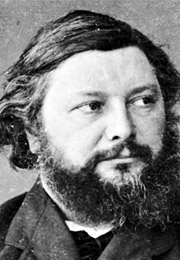Courbet sought to revolutionize painting in mid-19th-century France by upending academic conventions, seeking instead to reveal what he believed was a more truthful picture of contemporary life and social realities. He advocated for Realism in art, a distinctly modern approach to painting that stressed an unvarnished contemplation of the physical and social worlds, as well as fidelity to one’s own personal vision. Courbet was known for his radical political views as well as a grandiose persona that he conveyed in his writings as well as a series of theatrical self-portraits.
Courbet came from a wealthy farming family in Franche-Comté. The region would prove to be a strong influence on his art, as he focused on the peasants and rural landscape in many of his major paintings. In 1839 he moved to Paris, where he trained in a number of independent academies, finding the central École des Beaux-Arts unsatisfactory. He copied Old Masters at the Louvre and in 1846–7 traveled to the Netherlands and Belgium, where he soaked up the influence of Rembrandt and Franz Hals, while focusing mostly on painting portraits. In 1851, Courbet caused a sensation at the Salon with his large-scale canvases influenced by Dutch masters, which presented scenes of contemporary life that included middle-class people, peasants, and laborers with startling directness. Many viewers were shocked not only by the heroic treatment of common people but also by the lack of idealization of the figures.
A sharp critic of state power—especially France’s regime under Napoleon III—Courbet created paintings that served as a form of protest against its authoritarianism. In his epic 1854–55 work The Painter’s Studio: A Real Allegory Summing up a Seven-Year Phase of My Artistic Life, he depicted himself at the center of a diverse group of onlookers from different realms of society, which included pointed references to those in the ruling regime. After the fall of the government following the Franco-Prussian War, Courbet was active in the Commune of 1871, serving as president of the Federation of Artists for the short-lived socialist government. Following the Commune’s collapse, he was arrested and convicted for his role in the toppling of the Vendôme Column, an imperial symbol. After spending a brief period in jail, Courbet fled to Switzerland, where he painted during his last years.



